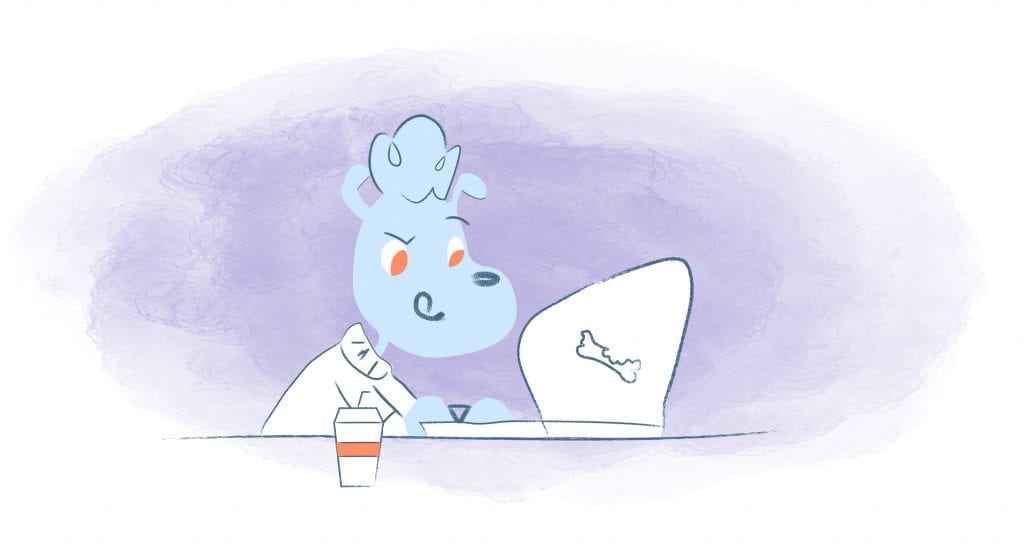

The other day I woke up in a foul mood. I can’t exactly pinpoint why. I’m guessing I’m just stressed and anxious about everything from work to returning to a “normal” world following the chaotic year that was 2020. But, don’t ignore your negative emotions.
Since I woke-up on the wrong side of the bed, I wasn’t exactly motivated to do much of anything. I was irritable and had a short fuse. And, I couldn’t stand being in that state.
Of course, no one of us like feeling that way. So, what do we do? We bury those negative feelings and force ourselves to be happy.
Here’s the thing though, that’s not exactly beneficial. In fact, experts have proclaimed for years that we should embrace our darker moods.
“We found that people who habitually accept their negative emotions experience fewer negative emotions, which adds up to better psychological health,” said Iris Mauss, an associate professor of psychology at UC Berkeley.
“Maybe if you have an accepting attitude toward negative emotions, you’re not giving them as much attention,” Mauss said. “And perhaps, if you’re constantly judging your emotions, the negativity can pile up.”
Interestingly, a study conducted at UC Berkeley found that those who resist and don’t acknowledge negative emotions are more psychologically stressed. On the other hand, those who did were less stressed, anxious, and depressed.
“It turns out that how we approach our own negative emotional reactions is really important for our overall well-being,” said study lead author Brett Ford, an assistant professor of psychology at the University of Toronto. “People who accept these emotions without judging or trying to change them can cope with their stress more successfully.”
That’s not to say that we should become consumed by the darkness. Rather, we should realize that negative emotions aren’t always bad. In truth, they may even be beneficial.
What Are Negative Emotions?
Before moving on, let’s quickly explain exactly what negative emotions are.
In a nutshell, these are those that make us feel crummy. They’re often unpleasant. And, because of this, we tend to avoid them at all costs.
Positive emotions then are more pleasant. Since they are more pleasurable, we seek these feelings out. After all, being positive can reduce stress and improves all areas of life, such as work performance and interpersonal relationships.
But, that’s just scratching the surface. Elaine Mead, BSc. states that we need to “distinguish between what an emotion is and what a feeling is. While the two are interconnected, there’s a bigger difference than you may realize.”
“Emotions are regarded as ‘lower level’ responses,” explains Mead. “They first occur in the subcortical areas of the brain such as the amygdala and the ventromedial prefrontal cortices. These areas are responsible for producing biochemical reactions that have a direct impact on your physical state.”
“Emotions are coded into our DNA and are thought to have developed as a way to help us respond quickly to different environmental threats, much like our ‘fight or flight’ response,” she adds. “The amygdala has also been shown to play a role in the release of neurotransmitters that are essential for memory, which is why emotional memories are often stronger and easier to recall.”
Because emotions “have a stronger physical grounding than feelings,” it’s easier for researchers to measure them objectively. Often, this is through “physical cues such as blood flow, heart rate, brain activity, facial expressions, and body language.”
“Emotions are seen as preceding feelings, which tend to be our reactions to the different emotions we experience,” clarifies Mead. “Where emotions can have a more generalized experience across all humans, feelings are more subjective.” They can also be “influenced by our personal experiences and interpretations of our world based on those experiences.”
“Feelings occur in the neocortical regions of the brain and are the next step in how we respond to our emotions as an individual.” Since feelings are subjective, “they can’t be measured the way emotions can.”
According to Dr. Paul Ekman, Professor Emeritus in Psychology at UCSF, there are six initial basic emotions:
- Anger
- Disgust
- Fear
- Happiness
- Sadness
- Surprise
He has since expanded on these to include:
- Amusement
- Contempt
- Contentment
- Embarrassment
- Excitement
- Guilt
- Pride
- Relief
- Satisfaction
- Sensory Pleasure
- Shame
If you are more interested in the work of Dr. Ekman, I suggest you visit the interactive tool over at Atlas of Emotions when you some downtime. It’s quite fascinating.
The main takeaway, for the time being, is that it’s completely normal to experience any of the above — both positive and negative. Furthermore, once you can identify and label your emotions, you’ll be able to use them to your advantage.
Why Negative Emotions Can Be a Positive
Again, negative emotions aren’t enjoyable. They can make you feel lousy, as well as interfere with your priorities. At the same time, they’re vital to the human experience as they serve the following purposes:
Motivates us to take action.
When you were nervous about a test in school, you studied your keister off. Have you been passed over for a much-deserved promotion? That frustration could push you to finally start your own business.
Helps us survive, thrive, and avoid danger. “Emotions serve an adaptive role in our lives by motivating us to act quickly and take actions that will maximize our chances of survival and success,” writes Kendra Cherry.
Because of fear, you become The Flash when you come across a snake. Another would be trusting your intuition when making a financial decision. Or, being afraid of getting sick encourages you to focus on your health.
Helps us make better decisions.
“Without emotions, your decision-making ability would be impaired,” Don Norman wrote in his book, “Emotional Design: Why we love (or hate) everyday things. “Emotion is always passing judgments, presenting you with immediate information about the world: here is a potential danger, there is potential comfort; this is nice, that bad.”
“One of the ways by which emotions work is through neurochemicals that bathe particular brain centers and modify perception, decision making, and behavior,” explains Norman. These neurochemicals change the parameters of thought.”
Let’s us understand others.
Have you ever worked through the door and the air felt heavy? You then see the body language and facial expression of a friend, family member, or co-worker. Without saying a word, you know that something is bad.
Because you’re in-tune with your emotions, you just know that they’re going through something. As such, you can adjust your behavior. Even though you might be excited to share some good news, this isn’t the time and place. Right now, you just need to listen and be supportive of them — aka being emotionally intelligent.
Allows others to understand us.
Equally, being aware of your emotions lets you send cues to others, just like the example above. If you’re sad, you may move a little slower or slump your shoulders. A close friend should pick-up on that and ask, “What’s wrong?”
Furthermore, this also lets you express if your emotions. If you’re frustrated about a work project, instead of snapping at a co-worker about some nonsense, you could communicate how you’re feeling. With that information, they could offer advice on how to resolve the problem.
As if that weren’t enough, ignoring your health is bad for your health mainly because it can impact you physically, such as causing stomach pains.
Also, emotions can also make you a better leader. It’s been found that sadness can make you more generous, while fear can help you think more rigorously. And, more importantly, this can help you become a more empathetic leader.
How to Embrace and Manage Negative Emotions
While there are advantages to negative emotions, they put additional stress on your mind, body, and soul. As such, it’s imperative that you not only embrace them but also find strategies to manage your emotions. When you do, you’ll be able to tap into their power.
One process that I’ve come across and have tried is the ACDC Method. Is it because AC/DC is a solid rock band? I can’t argue that, but it’s really because it’s a simple and effective technique.
- A – Acknowledge and Honor the emotion. “Feel it, but don’t let it become you,” explains Tracy Kennedy for Lifehacker. “Let it arise, persist, and pass.” After the acknowledgment, you can move forward.
- C – Consider the Positive Intention of the Emotion. Identify the message that the emotion is sending you. For example, if you dread going to work, it’s time to make a positive change, like switching careers.
- D – Double-Check Your Story. While there are times when our emotions are valid, sometimes they’re irrational. Challenge those thoughts from a logical perspective. For instance, you might assume that someone is angry at you because you haven’t heard from them. In reality, they’ve just been swamped.
- C – Choose Your Action. After doing all of the above, determine the appropriate steps. Instead of assuming that you did something to upset your friend, shoot them a text to see how they’re doing. When you hear back, you can put your mind at ease. But, you wouldn’t have known if you didn’t reach out.
You don’t have to use the ACDC Method. But, it works. Mainly, this is because it encourages you to acknowledge your feelings to cope with them in a healthy and helpful way.











John Hall
John Hall is the co-founder of Calendar a scheduling and time management app. He’s also a keynote speaker that you can book at http://www.johnhallspeaking.com.